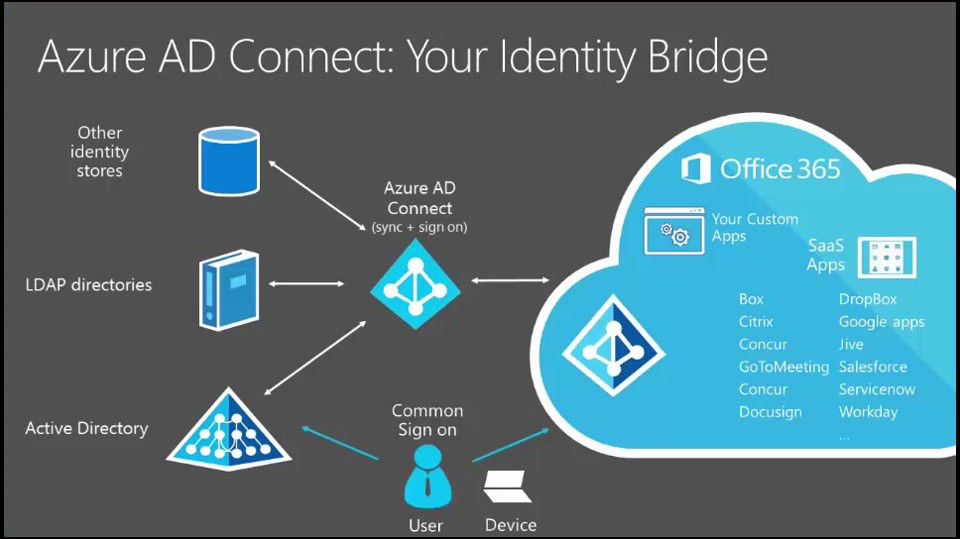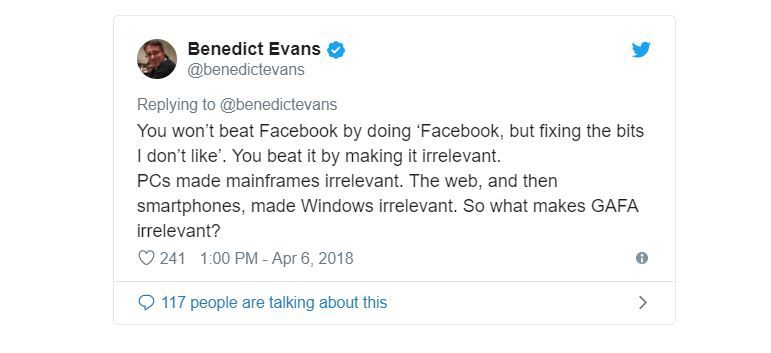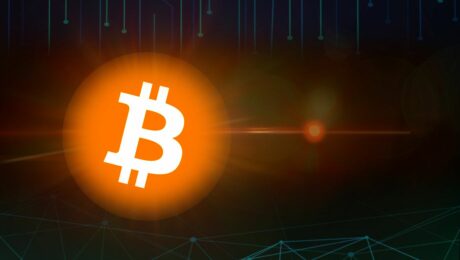Read the history, current status and future opportunities of decentralized identity recognition
With technology giants such as Microsoft entering the decentralized identity domain and headline chain companies like Coinbase and Blockstack stepping up their decentralized identity, it’s time to thoroughly understand the history and bottlenecks of the track. , status quo and future opportunities.
As cryptocurrencies play an increasingly critical role in the global marketplace, as we enter the world of encryption, traditional methods of identity identification are now the bottleneck.
Traditional identity identification has always been a tool for citizens to enter the current economic system and confirm their contribution to society. With the rise of the Internet, economic and data activities have moved to the hands of the online world and mainstream platforms. Today, large oligarchy use monopolistic data and identities to better understand what services humans may or may not need in the future.
Can humans trust the monopoly oligarchs and believe that the data they voluntarily provide are being protected from malicious acts?
The concept of self-sovereign identity is now more convincing, the concept is that one can protect his identity and data protection from others and at the same time enter the economy. An example of this economy is open finance. The premise of open finance is that anyone can enter an open network from any jurisdiction and have the ability to participate.
- Viewpoint | Giants enter, super industry cattle or on the road
- Several brain holes launched by Libra: Will Bitcoin become a "digital artifact"?
- Can US idle home appliances provide years of energy for Bitcoin? Cambridge University Innovation BTC Mining Index
In fact, millions of people are waiting for opportunities, but they can't really participate. What is the reason? The identity problem must be resolved before millions of people flock to benefit from this open network.
About the history and bottleneck of identification
While promoting the collaboration of human beings, the cognitive revolution also promoted the birth of rationalism. Human tribes first passed on jewels and tattoos to convey trust. As the tribe develops, the ability to trust grows, and the enemy has the ability to penetrate into the village by making jewelry. During the Roman Empire, as the economy developed, advances in written and recording technology grew exponentially, and written archiving systems have been developed and created to identify and track home ownership, business, or arrears.
As the economy develops, the population and the ability to expand trust are also growing. In the late 19th century, the government issued photo identification and documents to track births, education, ownership or business.
In parallel with this identification system, banks and merchants create manual registration lists of personal lending activities that are shared in towns as a way to track lending.
More and more lists have become a mandatory function of credit unions. This new credit system tracks debt, payment history, credit history and credit usage. The combination of photo identity, document traces and credit creates a modern identity system that is still in use today.
The credit system helps governments identify citizens, their contributions, and the way they integrate into society. In the foreseeable future, companies have the ability to trust and engage in economic activities. Ultimately, it allows citizens to participate in economic activities and integrate into society. However, with the invention of the Internet, modern identification systems have begun to travel to their historical turning points.
The birth of "heterogeneous identity"
Similar to the cognitive revolution, the Internet reduces collaboration costs and motivates new user behavior. Instead of relying on outdated systems, people are looking for newer, faster ways to do business – perhaps by looking for a new home, searching for a shared taxi, or connecting via social networking or remote work.
These platforms reduce collaboration costs and create a huge network effect. This allows large platforms such as Google, Uber, Facebook, and Microsoft to become large data aggregators while learning more about users.
People's reliance on these large platforms has made digital identities dominate. This shift marks the birth of "heterogeneous identity," an identity that can be broken down into specific user behaviors.
I divide my identity into three parts: traditional identity (government) , trust network authentication (Google and Facebook) , identity management solutions (Microsoft and Okta) . I will introduce some new fragmented identities such as web-based authentication and identity management solutions.
Network-based authentication
We can classify Facebook, Twitter, Google, and Snapchat as the main examples of the exchange data service platform. When we use these platforms for free, they collect data about our usage, online behavior, and metadata to target relevant ads and services. These platforms have aggregated enough data and are now called authentication proxies.
Authentication enables applications to easily track real users while providing access to data in return. Therefore, in this respect, identity is not only a means of certifying a person, but also a means of collecting data on user behavior. These data are useful in the hands of users, but it is dangerous if they fall into the hands of the platform. As we have seen, our online identity can be used by Cambridge analysts such as Cambridge Analytica and Facebook to deal with us.
Identity management solution
This refers to an enterprise managing identity solutions under a closed IT network infrastructure. Since the introduction of the Windows NT system, administrators can use directory services to store identity and login information. Behind the directory service is the LDAP protocol, an open protocol that is used by most directory applications, such as Microsoft's Active Directory. This enables companies of any size to seamlessly synchronize user data and deploy applications.
Cloud-based identities and a full suite of cloud offerings make it easier for companies of any size to manage remote workers and enable hackers to deploy complex phishing attacks and compromise work certificates. As we have seen in the recent credit agency Equifax hacking, valuable information can be hacked and endanger people's lives.

Opportunity for Heterogeneous Identity 2.0
As we have seen, in the age of computing, we are reaching a boiling point in identity recognition. We have expanded Internet users from 1 billion in 2005 to 3.2 billion in 2019. To prove the seriousness of this problem, a recent cybersecurity report from Shape Security shows that between 80% and 90% of users who log on to retailer websites use hackers who steal data.
Entrusting personal data to large companies is extremely dangerous for businesses and users. At the same time, the invention of the Sakamoto consensus algorithm also brought about the growth of the cryptocurrency economy, which led to the "Cambrian explosion" from decentralized finance to decentralized identification use cases. As the famous venture capitalist Josh Wolfe puts it, “We must follow the natural order of processes.” If we follow the natural order of processes, we will naturally generate an encryption-based identity solution.

The problem with blockchain-based identity systems today is that they address identity issues from a single perspective. This system may be suitable for specific use cases, such as wanting to take out beer from a vending machine, but it does not address the ability to take advantage of economic systems, such as using open finance or games. For example, borrowing a sum of money from A requires a person to mortgage the loan up to 150%.
Now imagine that if an identity-based solution can track the speed at which a person can repay a loan over a period of time, the underwriter can use the data at a lower cost to underwrite the loan to the borrower. Therefore, I believe that entrepreneurs should not solve the identity problem for the world we live in today, but for the world we will live in. As the economic system develops, identity will evolve and projects should focus on future use cases.
Blockchain-based identity
Decentralized future identification will be one of the most important issues, and hundreds of companies are working hard to solve this problem: whether it is Microsoft, IBM, RSA from the enterprise side, or Blockstack, Coinbase from the cryptocurrency side. , Uport. In the end, we will see several platforms win, because we will live in a more fragmented world, and our identity will be further split according to the scenario use case.

We need to re-recognize our identity, and identity no longer identifies who we are, but identifies our contribution to the agreement or the economy. This encourages good behavior while reducing malicious behavior and may create an economy in which the population is not identified but may contribute to the overall economy as well. This may be the world we will live in, but to achieve this we need to understand the types of solutions available and quantify the impact.
Decentralized network authentication
Decentralized network authentication enables users to verify other applications or services without giving up personal information. Interestingly, Coinbase recently acquired Distributed Systems , an identity solution built for the Clear Protocol.
Most identity solutions today are similar: you have to download a Chrome extension, create a wallet, fund your wallet and sign a deal – one of the biggest obstacles. Coinbase has grown to more than 20 million KYC users with a wealth of identity data that can be used in new industries such as decentralized finance.
Coinbase plans to launch a Facebook-like SDK that allows seamless integration of other DApps and services. This reduces friction and allows users to seamlessly switch between DApp and service.
From a developer's perspective, this kind of operation makes it easier to get and retain users while focusing on growth. This will transform the identity from authenticating personal information to authenticating personal information and money, bringing new applications and services that will create new business models with cryptocurrencies in mind.
Ecosystem approach
Blockstack 's vision is that users only need to authenticate once, instead of having to authenticate again while browsing the Internet.
They have four components that enable users to seamlessly authenticate and protect data:
- The first component is the Stacks blockchain, which provides a global consensus for the network. Stacks tokens allow users to purchase usernames, perform smart contract functions, or connect to storage.
- The second is the Gaia storage system, which allows you to store all your data in an encrypted private data storage space that can be hosted on your hard drive or cloud storage provider.
- The third component is the protocol itself, which verifies the identity the user has and the location of the Gaia storage.
- The final component allows developers to easily integrate the BlockStack SDK into their core applications for seamless login.
The Blockstack team is taking a manageable approach and moving from considering the blockchain itself to the end-user experience for identity when building the entire stack.
Based on agreement
Microsoft adopted an open standard approach by introducing the Identity Overlay Network (ION) .
ION is an open protocol built on top of the Bitcoin blockchain, a communication and batch layer that manages and anchors decentralized identifiers (DIDs) . A DID is an immutable document that can store a user's personal information with a unique ID.
Microsoft chose to build a Layer 2 solution that maximizes throughput and avoids the use of consensus algorithms. As a result, it enables developers to build scalable solutions while providing a universal deterministic state solution.
Companies like CloudFlare can seamlessly run an ION node and anchor data to the Bitcoin blockchain, charging the end user a nominal fee. Microsoft is convinced that by establishing an open standard, it can attract a variety of developers while focusing on interoperability with traditional networks.
Ria Bhutoria of the blockchain company Circle Research gave a detailed introduction to Microsoft's ION and is worth reading: https://research.circle.com/weekly-recaps/weekly-crypto-recap-shield-your-id-with -did .
Other exciting solutions
Formatic is taking a developer-centric approach by providing developer tools that enable DApps to seamlessly access new users by enabling them to log in and use DApps using only traditional phone numbers. This approach reduces friction and allows newly activated users to quickly enter the DApp, allowing users to protect personal information when switching between different applications and services. So far, they have integrated OpenSea, Set Protocol, Zerion, and so on.
Uport also has an interesting solution, based on the foundation of the Ethereum protocol, providing a self-sovereign wallet and a single sign-on service DApp, allowing seamless integration of applications from Web 2.0 and Web 3.0, while providing certificates for issuance and reuse. Ability. Uport is available on the iOS and Google Play stores and can be used with Meleonport, Gnosis, Status, and more.
Humanity Dao is an identity solution based on a decentralized autonomous organization. This is the first identification system to incorporate governance and universal base revenue into the certification process, and the use of a user-managed identity system may have an interesting value proposition. Humanity Dao is in the early stages of development, but I am optimistic about the founder of this system.
in conclusion
As technology and society advance, our ability to identify and authenticate is also increasing. Data is the most valuable asset we have. We can control our own data and make informed decisions that will benefit our future.
The computing era has given us an opportunity to improve the society with applications and services, but it also leaves us with an open space that can be improved. We are transitioning from the computing era to the era of machine intelligence, so blockchain-based identity solutions are necessary.
I believe that identity-based solutions will evolve to be more granular and focus on economic use cases such as open finance, gaming or trading markets.
Author: Imran Khan
Compile: Zhan Wei
Source: Chain smell
We will continue to update Blocking; if you have any questions or suggestions, please contact us!
Was this article helpful?
93 out of 132 found this helpful
Related articles
- Trading cryptocurrencies on ATM machines, this feature will be available in the next 170,000 machines
- In the first half of the year, there were a total of 408 blockchain application projects: 10 top fields of finance, government affairs, and traceability to the top three
- Facebook official announced that "will not give up Libra", Zuckerberg is determined to "block bullets" for Bitcoin
- Both are 2019, will you also recommend newbies to buy Bitcoin?
- Research Report | Digital Pass Industry Status and Blockchain Index Product Inventory
- The first half of the open market financing totaled $2.59 billion behind: Algorand only ranked fifth, STO nobody cares
- [Chainge] Technical Salon Roundtable "DeFi: Decoding New Opportunities for Cross-Chain Investment"





